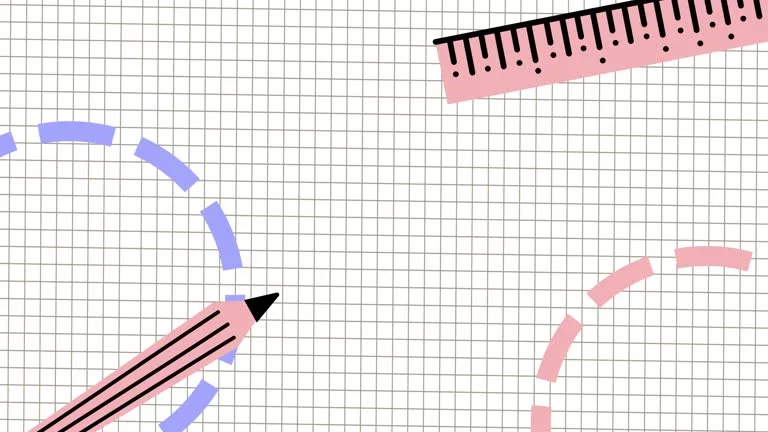Mathematics is a subject built on structure, logic, and visual representation. Among the many teaching tools that support learners, number lines have stood the test of time. They not only provide clarity for basic arithmetic but also build a foundation for abstract concepts like negative numbers and fractions. Teachers often rely on different styles of number lines to adapt to classroom needs, and one modern innovation is the vertical number line, which offers a fresh way of helping students understand value and direction.
Below, we’ll explore the significance of number lines in education, the differences between traditional and vertical formats, and how educators can use them to engage students more effectively.
Why Number Lines Matter in the Classroom
Building Early Mathematical Intuition
From kindergarten to elementary school, children need a visual method to see how numbers progress. Number lines provide a concrete reference for understanding addition and subtraction, moving learners beyond rote memorization.
Transitioning to Abstract Concepts
As students advance, they begin to work with negative numbers, fractions, and decimals. A number line offers continuity between these new concepts and the foundation they already know. This bridge is vital for preventing gaps in understanding.
Encouraging Interactive Learning
Rather than being limited to textbooks, number lines invite hands-on exploration. When learners physically move along a line or place markers at certain points, they engage kinesthetic learning styles and reinforce memory through activity.
Horizontal vs. Vertical Number Lines
The Traditional Horizontal Layout
The horizontal number line is familiar in most classrooms. It resembles a ruler, progressing from left to right. While effective, this design can sometimes lead to challenges when students attempt to connect the idea of direction with real-world contexts, such as temperature rising or elevators going up and down.
Benefits of the Vertical Format
A vertical number line aligns naturally with concepts of height, elevation, and depth. For example, teaching integers becomes more intuitive—positive numbers rise upward, while negatives extend downward. Students quickly grasp the idea of “going below zero,” much like moving below sea level.
Practical Classroom Applications
Teachers have found that vertical number lines improve engagement, particularly when discussing topics like graphing, temperature changes, and algebraic inequalities. By relating abstract numbers to physical space, lessons become more dynamic and relatable.
Strategies for Using Number Lines Effectively
Interactive Classroom Activities
- Ask students to physically move along a floor-sized number line to represent addition or subtraction.
- Use sticky notes to place “mystery numbers” that classmates must identify through hints.
- Apply vertical lines to illustrate elevators moving between floors, helping learners visualize integers.
Connecting to Real-Life Examples
Number lines shouldn’t exist only in math class—they should tie to real-world situations. Teachers might use them to explain weather changes, bank account balances, or game scores, demonstrating how math connects to daily life.
Progression Through Grade Levels
- Elementary School: Focus on whole numbers and simple operations.
- Middle School: Introduce negative values, fractions, and rational numbers.
- High School: Expand to functions, inequalities, and graphing concepts.
Beyond Number Lines: Tools That Strengthen Math Learning
Number lines are powerful, but they are just one element in a broader teaching toolkit. Educators can enhance engagement by combining visual, auditory, and tactile methods.
Incorporating Technology
Interactive whiteboards and digital apps allow students to manipulate number lines virtually, fostering collaboration.
Using Manipulatives
Counters, fraction strips, and base-ten blocks provide tactile reinforcement, helping students connect physical movement with numerical ideas.
Encouraging Peer Teaching
When students explain concepts to each other using number lines, they develop communication skills and deepen their understanding.
Lists to Enrich Learning Context
Everyday Examples of Numbers in Action
- Tracking steps on a fitness app.
- Comparing temperatures across seasons.
- Calculating a sports team’s score differences.
- Following a recipe’s measurements.
- Monitoring changes in stock prices.
Engaging Math-Related Activities for Students
- Designing a board game that uses number lines for movement.
- Creating a classroom chart of daily temperatures.
- Competing in “number line races” where answers determine progress.
- Tracking classroom reading minutes along a giant line.
Skills Strengthened Through Number Line Practice
- Logical sequencing.
- Understanding opposites and direction.
- Recognizing symmetry around zero.
- Visualizing operations like addition and subtraction.
- Building number fluency for advanced problem-solving.
Conclusion
Mathematics instruction thrives on clarity and engagement. Number lines provide both, acting as a consistent visual reference from early arithmetic through complex algebra. While traditional horizontal lines remain valuable, vertical formats unlock new opportunities for connecting numbers to real-world experiences like elevation, temperature, and depth.
By blending interactive activities, relatable examples, and supportive tools, educators can transform the way students view mathematics. A number line is more than just a diagram—it’s a pathway to confidence, understanding, and long-term success in math.






